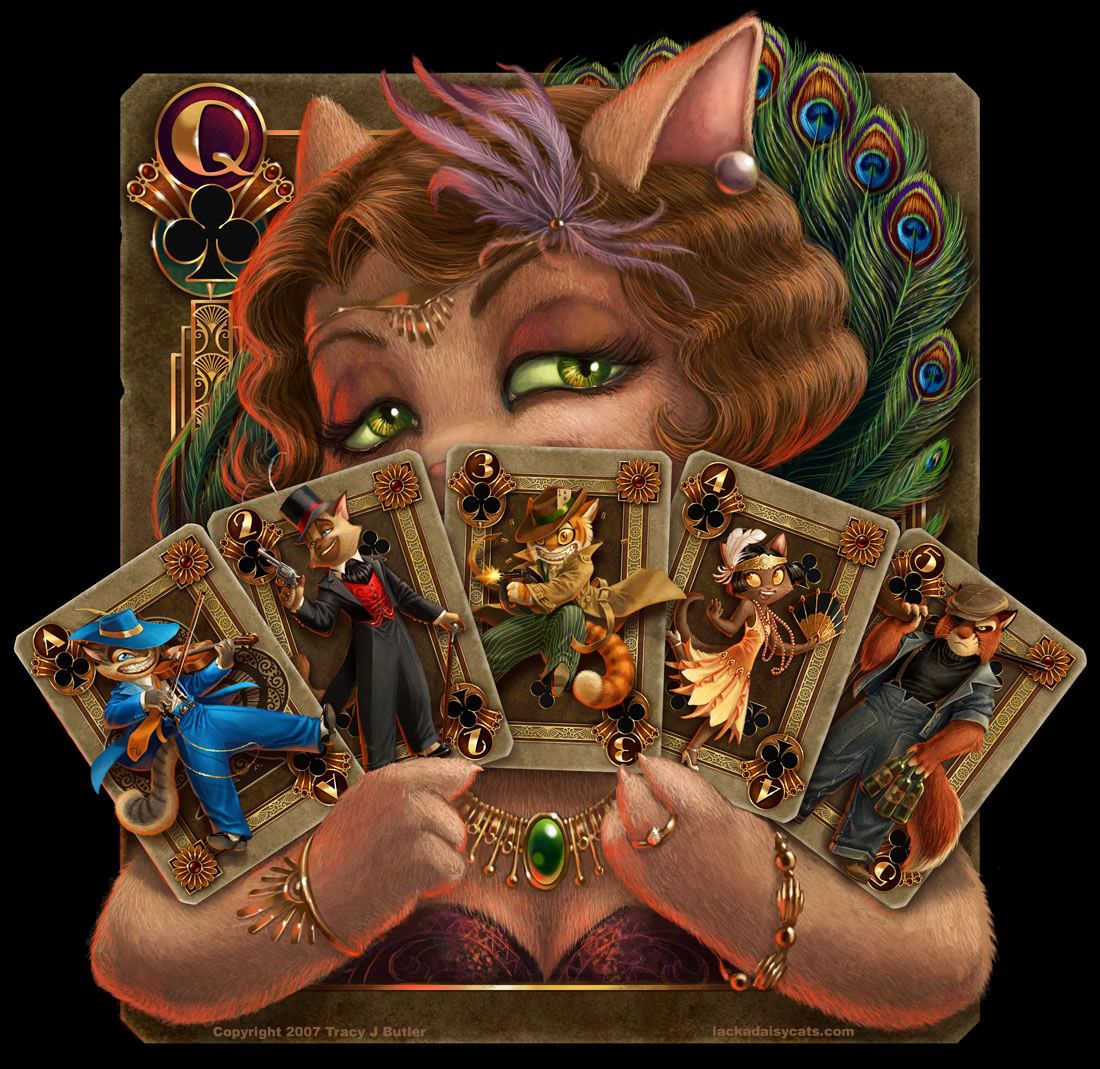One of the oldest and most highly acclaimed funny animal webcomics is Tracy J. Butler's Lackadaisy. With origins dating as far back as 1994, when Butler created characters Rocky and Mitzi while still in high school, Lackadaisy took to the Internet in 2006, and has gone on to win several awards, including the Web Cartoonists' Choice Awards and the Ursa Major awards. It was also nominated in 2011 for an Eisner for Best Digital Comic.
Lackadaisy also has one of the slowest update schedules. As with many creators, the webcomic is not the artist's primary occupation. She's a digital artist who works on video games, and she updates as often as she can. How often? Well, the last page was updated in April, and the current rate seems to be three to four pages a year.
For many creators, such little activity over such a long span of time would be something of an embarrassment. There would be so many changes to contend with: maturing storytelling sensibilities, evolving artistic styles, shifting personal interests, etc. Especially a story about cartoon cats running around and getting into trouble. Shouldn't Butler have grown out of that by now?
It's an amazing thing, then, that Lackadaisy kicks off with such a strong start. The comic is about the trials and tribulations of a small speakeasy named the Lackadaisy in 1920s St. Louis. Mitzi, the owner, inherits the establishment after the death of her husband; among her employees are Rocky, a cheerful yet often irresponsible musician who is up for whatever task Mitzi sends her way, and Freckle, Rocky's cousin who's slowly being corrupted by the gangster lifestyle. Along with Mitzi's goddaughter Ivy, they must face several challenges, including irate bootleggers, rival gangs, the law and -- worst of all -- the fickleness of supply and demand.
So much of Butler's artistic skills are on display from the very first page. Let's start with her command of the lost art of drawing funny animals: The facial expressions are charmingly animated, as if they were stills from a Disney cartoon. Each panel features a different glance, an new curl around the mouth, a tilt of the head. Body language conveys more than word balloons. By making all of her characters felines, Butler has the freedom to play around with characters of different shapes and sizes. There are cats who are portly slobs, suave detectives, and stern matrons.
The black-and-white illustrations (or rather, sepia-and-white?) look great, and they give Lackadaisy the right retro touch for a story set during Prohibition. It's filled with all sorts of details, like the loose swaths of cloths hanging from clothes or the ornate molding on vehicles and architecture. It's of exceptionally high quality from the start, but it's to Butler's credit that she continually strives to improve. The most recent pages have a slick airbrushed look that includes small hints of color that never distract.
There's one fantastic page when Rocky and Ivy are cornered by a car. The attackers are invisible; it seems all the world that it's the car itself that's attacking them. I love the subtle scene-to-scene transitions. The attackers edge the car forward from one scene to the next, and while you do see it happen, much of it is conveyed in the characters' reactions. As it the moment when they hurl things at the car. You see things fly in the air and Rocky and Ivy with their frozen, outstretched arms. It's both a funny sight gag and a tense, action-packed sequence.

